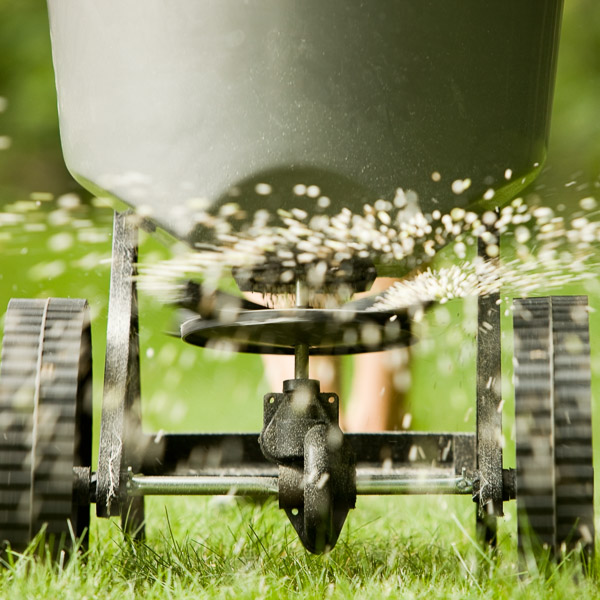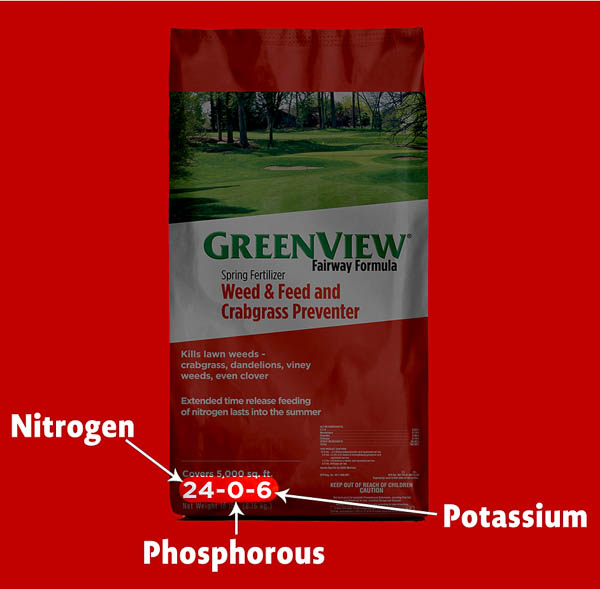Choosing the best fertilizer for your lawn can be overwhelming, but it is crucial for the health and growth of your grass. There are many different types of fertilizers on the market, each with its unique blend of nutrients and designed for different types of grass and growing conditions.
To choose the right fertilizer, you must consider factors such as the type of grass you have, the soil conditions in your area, and the time of year. Although selecting the best fertilizer for your lawn can be challenging, doing so is essential to growing a healthy lawn.
Determine the type of grass you have
There are many different types of grass seed, each with its unique characteristics, such as the texture and color of the blades, the amount of shade tolerance, and the amount of water required.
When deciding which fertilizer is best for your lawn, knowing what grass is in your yard is crucial. The two types of grass seeds are cool-season grasses and warm-season grasses.
Cool Season Grass
Cool-season grass thrives in cooler climates such as the northeastern and midwestern United States. This type of grass can withstand cold weather in the winter.
Some of the most popular cool-season grasses are:
- Kentucky Bluegrass
- Perennial Ryegrass
- Fine Fescue
- Tall Fescue
Warm Season Grass
Warm-season grass grows best in warmer climates like the southern United States. These types of grass can tolerate hot weather and thrive during high summer temperatures.
Some of the most popular warm-season grasses are:
- Zoysiagrass
- St. Augustine Grass
- Bermuda Grass
- Centipede Grass
Test soil from your lawn
Before choosing a fertilizer for your lawn, it is important to test the soil to determine its nutrient and pH levels. These kits allow you to send a sample of your soil to a state lab, where you will receive advice to help you choose the best lawn fertilizer for your yard.
DIY at-home tests are available to get a general read on the primary nutrients and pH (the soil's acidity level). For complete results, get a soil test through state land-grant universities and their extension services.
Identify any lawn problems
A second thing to do is to determine what's wrong with the lawn, such as poor color, growth, disease, or weeds. Many lawn problems are related to soil nutrition and can give you a clue about specific fertilizer needs. Grass that's light green or yellow-green rather than dark green is often a sign that the soil lacks nitrogen.
Under-fertilized lawns, particularly those lacking nitrogen, are likely to experience diseases such as dollar spot, rust, and red thread. Additionally, under-fertilized lawns tend to have a higher amount of weeds.
On the other hand, putting too much fertilizer on your lawn can make it more likely to get diseases like summer patch, brown patch, and pythium blight and cause too much thatch to build up.
When to fertilize the lawn
Most lawn-care programs recommend fertilizing four or more times yearly since most added nitrogen is depleted in about eight weeks.
Generally, fertilizer applications are made in the:
- Early spring, when the growing season is just beginning, generally between February and March for cool-season lawns. It is typically done in conjunction with crabgrass prevention.
- Late spring to help replenish nutrients the lawn used in early spring to get going, typically done in conjunction with weed control.
- Early summer to help prepare the lawn for the stresses caused by heat and drought.
- Fall to help the lawn recover from the summer stress.
However, now that coated granules and other slow-release nitrogen technologies are available, lawns can be fertilized less often to get the same results. Fertilizers with slow-release nitrogen save you time and make it almost impossible to burn your lawn by using too much traditional "fast-release" nitrogen.
GreenView Fairway Formula Lawn Fertilizers are slow-release fertilizers that use a patented formula to feed the lawn for up to 12 weeks. It gives professional results with just two fertilizer applications per year, one in the spring and one in the fall.

Types of Fertilizers
The composition of fertilizers varies in terms of the three main macronutrients they contain: nitrogen, phosphorus, and potassium. The different formulas cater to specific types of plants and soil with varying nutrient needs.
The essential nutrient for turfgrass is nitrogen. It's the primary fuel for blade growth and the production of chlorophyll, which gives grass its rich, green color. Lawns require high amounts of nitrogen, so lawn fertilizers often have a nitrogen content of 20% or more.
Phosphorus is mainly present in starter fertilizers, and its primary function is to promote root growth and energy production. In most cases, the soil already contains sufficient phosphorus for grass growth. GreenView Fairway Formula Lawn Fertilizers do not have any added phosphorus to avoid waste and potential pollution from runoff.
GreenView Starter Fertilizer with GreenSmart is an option that includes phosphorus to encourage root growth along with 10 percent each of nitrogen and potassium.
Potassium helps lawns fend off drought, diseases, and other stress causes. Potassium is integral to fall lawn fertilizers for lawns that grow in cool climates. It helps cool-season lawns prepare for winter to withstand colder weather.
Fairway Formula Fall Fertilizer is a great fall option with a higher-potassium 30-0-12 formula that repairs summer damage and encourages winter survival while promoting a quick spring green-up.
NPK values
You can tell the percentage of the bag's weight for each macronutrient with the 3-number code (NPK) located on the bag. The first number is the percentage of the bag's weight in nitrogen. The second is the percentage of phosphorus, and the third is the potassium percentage. A code of 20-5-10, for example, tells you that 20 percent of the product's weight is nitrogen, 5 percent is phosphorous, and 10 percent is potassium.

Fertilizers with crabgrass preventer
Crabgrass preventer is added to some lawn fertilizers to help stop crabgrass from growing on your lawn.
Fairway Formula Spring Fertilizer with Crabgrass Preventer prevents crabgrass for up to 4 months while providing your lawn with 12 weeks of continuous fertilizing.
Weed & Feed
Fairway Formula Spring Fertilizer Weed and Feed and Crabgrass Preventer for those who want to fertilize, kill weeds, and prevent crabgrass simultaneously.
Organic Fertilizers
Organic lawn fertilizer is derived from natural, organic sources such as animal waste, plant-based materials, and minerals instead of synthetic chemicals.
For those leaning organic, GreenView offers a slow-acting, 15-0-7, organics-rich fertilizer called Turf Nurture that can be used just once or twice per year.
Fertilizing Tips
When fertilizing your lawn, follow these few tips to ensure the best results.
Apply the right amount of fertilizer evenly.
Check the label of the spreader you are using to ensure you apply the correct amount of fertilizer. Additionally, consult the package for advice on spreading the granules evenly, avoiding overlapping or over-applying.
Water the lawn after application.
To maximize the effectiveness of the nutrients, water the lawn a day or two before fertilizing and immediately after application. Alternatively, you can fertilize just before a forecasted rain; however, if the fertilizer contains weed killers, applying it to a damp lawn that has not been watered for at least 24 hours after application is best.
Consider local restrictions or regulations.
Finally, remember that some regions have restrictions on when you can fertilize lawns, and the use of phosphorus may be limited in certain conditions. Check your local restrictions and regulations before applying.